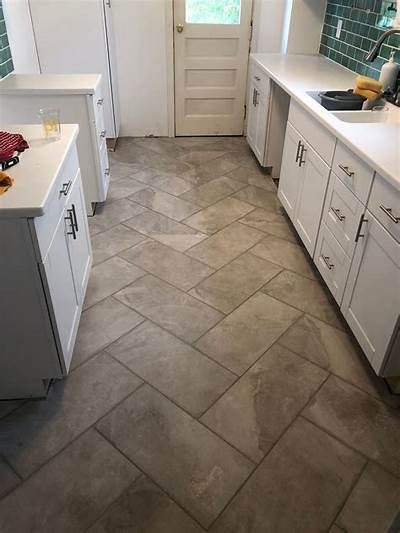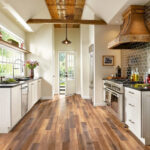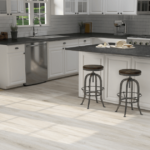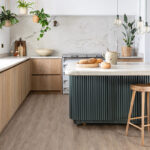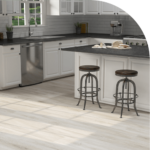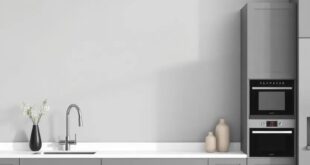When it comes to designing and renovating a kitchen, one of the most important decisions to make is the choice of flooring. The kitchen is a high-traffic area that is subjected to spills, stains, and heavy foot traffic on a daily basis, so choosing the right flooring material is crucial.
There are many different types of kitchen flooring options available, each with its own set of pros and cons. Some of the most popular choices include hardwood, tile, laminate, vinyl, and concrete.
Hardwood flooring is a popular choice for kitchens because of its timeless look and durability. Hardwood floors are easy to clean and maintain, and they can add warmth and character to any kitchen. However, hardwood floors can be prone to water damage, so it’s important to wipe up spills quickly to prevent warping or staining.
Tile flooring is another popular option for kitchens because of its durability and versatility. Tile floors come in a wide variety of colors, patterns, and textures, making it easy to find a style that fits your kitchen’s aesthetic. Tile floors are also easy to clean and resistant to water, making them a great choice for busy kitchens.
Laminate flooring is a budget-friendly option that mimics the look of hardwood or tile at a fraction of the cost. Laminate floors are easy to install and maintain, and they are resistant to scratches, stains, and fading. However, laminate floors can be prone to damage from standing water, so it’s important to wipe up spills quickly to prevent damage.
Vinyl flooring is another budget-friendly option that is durable, water-resistant, and easy to clean. Vinyl floors come in a wide variety of colors and patterns, making it easy to find a style that suits your kitchen. However, vinyl floors can be prone to scratches and tears, so it’s important to use furniture pads and take care when moving heavy objects across the floor.
Concrete flooring is a modern and trendy option for kitchens that offers durability, easy maintenance, and a unique industrial look. Concrete floors can be stained, polished, or sealed to create a variety of finishes, and they are resistant to water, stains, and scratches. However, concrete floors can be hard and uncomfortable to stand on for long periods of time, so it’s important to use rugs or mats in high-traffic areas.
When choosing a kitchen flooring material, it’s important to consider factors such as durability, maintenance, cost, and aesthetics. Consider how much foot traffic your kitchen gets, how often you cook and entertain in the space, and your budget when making your decision. No matter what type of flooring you choose, taking care of your floors with regular cleaning and maintenance will help them last for years to come.
 Decorationg Interior Design
Decorationg Interior Design
